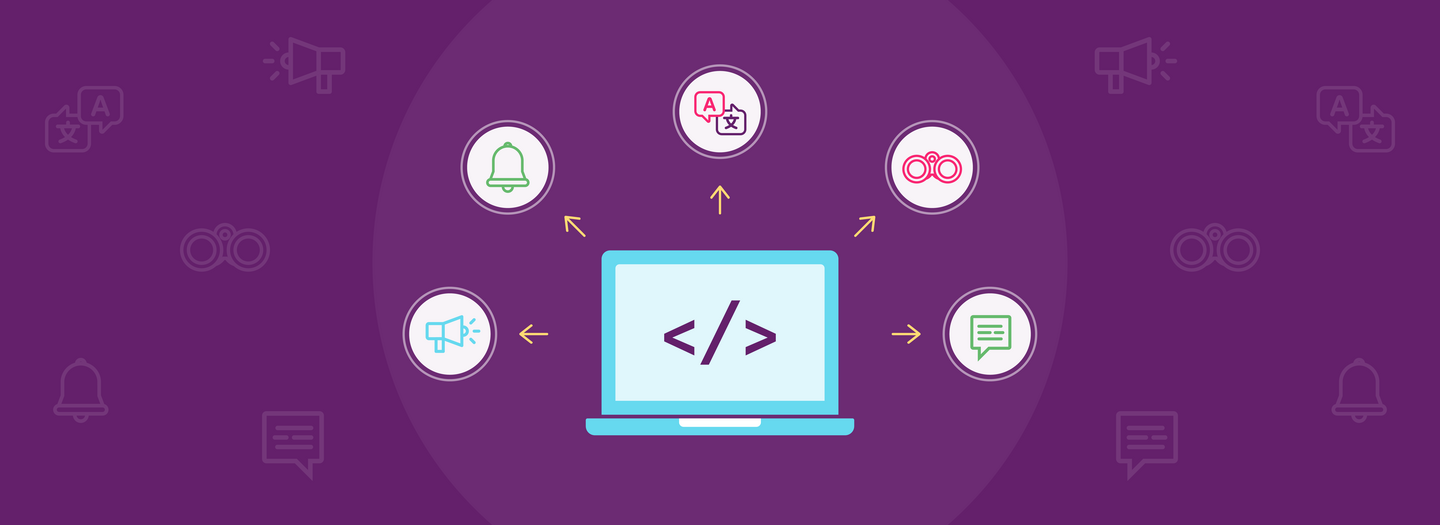Three Ways to Bake Accessibility Into Your Website
Incorporating accessibility into your digital practice doesn’t need to be difficult. Here are three digital practices that you can adopt today to make your website accessible by default.
For organizations trying to incorporate accessibility into their digital practice, starting off can seem overwhelming. However, it doesn’t need to be difficult.
Whether you’re in the midst of a redesign or you’re continuously updating and developing your platform, there’s no bad time to begin incorporating accessibility planning into how you think about your digital platform. Here are three digital practices that you can adopt today to begin seamlessly incorporating accessibility into your website.
1. Constantly evaluate your user experience
While running automated scans can help you comply with WCAG 2.1 rules, building accessibility awareness into your planning processes will help you address problems before they can become codified on your site and show up in those scans.
Numerous accessibility problems can be identified by performing user experience testing in advance. Sites that offer a poor user experience are likely to support an even worse accessibility experience.
For example, a form with a large number of fields or poor user prompting will be difficult enough for users who aren’t using assistive technologies. A poorly-designed experience may cause your users to give up and leave your site.
It’s important to remember that even if something is “technically” accessible, if it’s so difficult to use that it’s effectively inaccessible it may still pose a compliance risk for your organization. Risks can be mitigated by incorporating user and usability testing processes throughout every phase or iteration of design and improvement of your platform.
2. Make accessibility a central part of your design and workflow process
If you have a design system or component-based design, it’s important to take the time to validate your patterns. Performing validation all at once means that you don’t have to worry about accessibility compliance on a page-by-page or element-by-element basis.
Additionally, there are ways that you can configure your platform so that accessibility compliance goals are met every time new content is added. One way of configuring your platform is by making the system require users to enter alt tags on every image that is uploaded to the site. Another way is by setting up your publishing workflows so that pages can’t be published until they have a complete set of metadata. These two small technical configurations can help you ensure that your site is accessible to users that are visiting using assistive technology.
3. Audit migrated content for missing Alt tags and metadata
If you’ve migrated content from an old platform to a new one, or you’re in the process of a migration, make sure you take the time to check your migrated content for missing alt tags and metadata.
Even if your systems requires that information be inputted on all new content, if the editorial view of migrated content is never opened, the site will never alert you that you’re missing that information. Auditing your migrated content doesn’t need to be a time-intensive task, either: You can begin by identifying what content was migrated over in the past, creating a list, and then having your team work down that list when they have time, crossing things off as they go.
Want to level up your accessibility game? Hire an evangelist.
If you’re really serious about including accessibility in every aspect of your digital presence, consider hiring an evangelist. This person can be someone who uses assistive technologies or who has a close family member that relies upon good accessibility practice. Having someone on staff who has personal experience with accessibility can help you create authenticity and a culture of digital inclusion that benefits everyone.
Do you want help configuring your website to meet your accessibility goals, or are you interested in running an audit of your systems and your content? Contact FFW. Our accessibility experts can help you identify your current gaps, determine next steps, and make the changes you need to maximize the value of every visitor experience.

